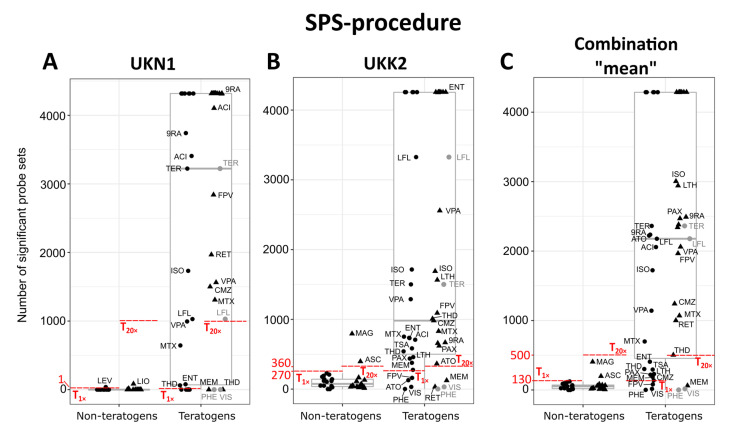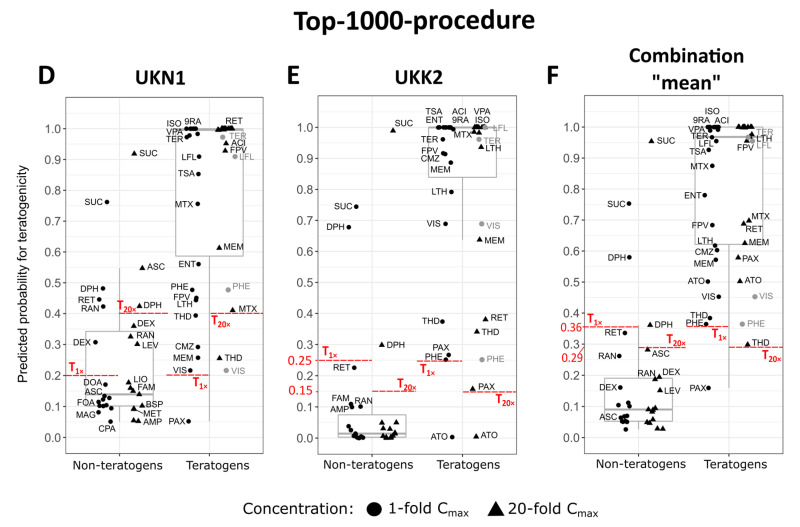Figure 4.
Classification of the teratogenic and non-teratogenic compounds by the SPS-procedure, a method based on the number of significantly deregulated probe sets (SPS), and the top-1000-procedure, a penalized logistic regression-based technique using the 1000 probe sets with the highest variance. (A–C) SPS-procedure. The number of SPS for each test condition is given on the y-axis and the x-axis marks non-teratogens and teratogens (compound abbreviations are explained in Table 1). 1-fold-Cmax conditions are indicated with black dots, 20-fold Cmax conditions with black triangles. Grey dots represent the numbers of SPS at 1-fold Cmax of LFL, PHE, TER, and VIS, which were compared to 20-fold Cmax thresholds. For the UKK2 test, SPS numbers were adapted from Cherianidou et al. 2022, but retinol at 20-fold Cmax was considered as a teratogen. SPS numbers above or below the thresholds T1× and T20× (red dashed lines) for 1-fold and 20-fold Cmax conditions, respectively, were considered to be test-positive or test-negative. Cytotoxic conditions were considered to be test-positive and were assigned with a high number of SPS (UKN1: 4318; UKK2: 4257). Thresholds UKN1 (A): 1-fold-Cmax: 1 SPS; 20-fold-Cmax: 1000 SPS; UKK2 (B): 1-fold-Cmax: 270 SPS; 20-fold-Cmax: 360 SPS; combination ‘mean’ (C): 1-fold-Cmax: 130 SPS; 20-fold-Cmax: 500 SPS. (D–F) Top-1000-procedure. The predicted probability for teratogenicity is given on the y-axis, and the x-axis marks non-teratogens and teratogens. Cytotoxic conditions were considered to be 100% test-positive (predicted probability of 1.0). Thresholds UKN1 (D): 1-fold-Cmax: 0.2; 20-fold-Cmax: 0.4; UKK2 (E): 1-fold-Cmax: 0.25; 20-fold-Cmax: 0.15; combination ‘mean’ (F): 1-fold-Cmax: 0.36; 20-fold-Cmax: 0.29.


